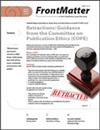Solifuge (camel spider) reproductive biology: an untapped taxon for exploring sexual selection
IF 0.9
3区 农林科学
Q3 ENTOMOLOGY
引用次数: 2
Abstract
Abstract. The exploration of new and diverse animal groups in the study of sexual selection is both necessary and important to help better understand broad patterns and test sexual selection hypotheses regarding the evolutionary origins and maintenance of reproductive tactics and associated traits. Solifuges are, in this matter, an exceptional group and very little explored from the sexual selection point of view. At first glance, mating is apparently quite simple and conserved within this arachnid order, but solifuge reproductive behavior is unique among arachnids and more diverse than previously thought. In particular, these voracious animals appear to exhibit high sexual conflict, as males need to avoid being eaten by their aggressive female partners and mating encounters in some species involve periods of apparently male-induced female inactivity during sperm transfer. The extent to which reproductive encounters are coercive versus collaborative, however, remains largely unknown. In this review, we begin with a historical perspective of sexual behavior research in solifuges. We then discuss precopulatory mating patterns, the role of the female and male during mating, sexual dimorphism, and the influence of sexual selection during different stages of mating. In addition, we explore cases of sexual cannibalism and provide an updated analysis of how postcopulatory sexual selection may be acting on these amazing arachnids. This review shows that there is much to be done in this extraordinary group of animals.骆驼蜘蛛生殖生物学:一个未开发的分类单元,用于探索性选择
摘要在性选择研究中探索新的和多样化的动物群体对于帮助更好地理解广泛的模式和测试关于生殖策略和相关特征的进化起源和维持的性选择假设是必要和重要的。在这个问题上,孤体是一个特殊的群体,从性选择的角度来看,它很少被探索。乍一看,在这种蛛形纲动物中,交配显然是相当简单和保守的,但单独的繁殖行为在蛛形纲动物中是独一无二的,而且比以前认为的要多样化得多。特别是,这些贪婪的动物似乎表现出高度的性冲突,因为雄性需要避免被好斗的雌性伴侣吃掉,而在某些物种的交配中,在精子转移过程中,雌性显然会处于雄性诱导的不活动状态。然而,生殖接触在多大程度上是强制性的还是合作性的,这在很大程度上仍然是未知的。在这篇综述中,我们首先从孤立性行为研究的历史角度出发。然后,我们讨论了交配前的交配模式,雌性和雄性在交配中的作用,两性二态性,以及交配不同阶段性选择的影响。此外,我们还探讨了性同类相食的案例,并提供了交配后性选择如何作用于这些神奇的蛛形纲动物的最新分析。这一综述表明,在这一非凡的动物群体中,还有很多工作要做。
本文章由计算机程序翻译,如有差异,请以英文原文为准。
求助全文
约1分钟内获得全文
求助全文
来源期刊

Journal of Arachnology
生物-昆虫学
CiteScore
2.20
自引率
10.00%
发文量
34
审稿时长
>12 weeks
期刊介绍:
The Journal of Arachnology publishes scientific articles reporting novel and significant observations and data regarding any aspect of the biology of arachnid groups. Articles must be scientifically rigorous and report substantially new information.
 求助内容:
求助内容: 应助结果提醒方式:
应助结果提醒方式:


